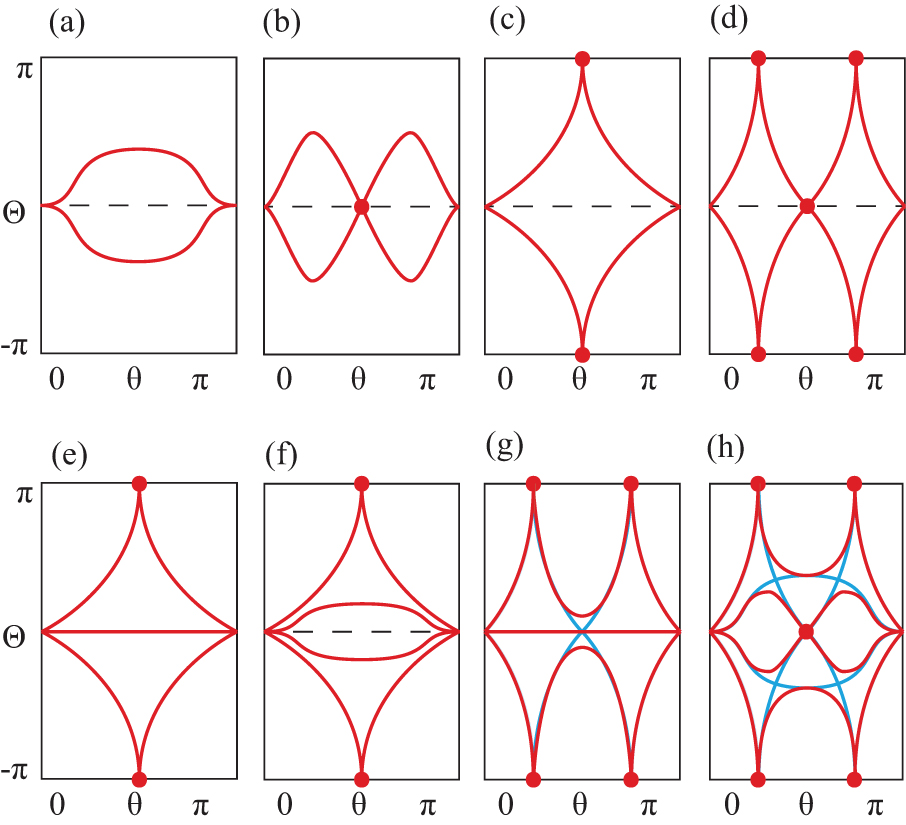Stiefel–Whitney classes and topological phases in band theory
Wilson loop spectra on a sphere. The Wilson loop operator is calculated along the azimuthal direction with a fixed polar angle θ. (a)–(d) When the number of occupied bands Nocc is two. The winding number is (a), (b) zero, (c) one, and (d) two. (b) can be adiabatically deformed to (a) as we push the crossing point on Θ = 0 out of the boundary at θ = 0 or θ = π. (e)–(h) When Nocc = 3 or Nocc = 4. (e) has a flat spectrum on Θ = 0 in addition to (c). Adding a small perturbation to (e) does not deform the spectrum when Nocc = 3, while it deforms the spectrum to (f) when Nocc = 4. Panels (g) and (h) show the Z2 nature of the Wilson loop spectrum for Nocc = 3 and Nocc = 4, respectively. Blue lines in (g) and (h) are obtained after adding one and two flat bands to (d), respectively, whereas red lines are the spectrum after adding a PT-preserving deformation which eliminates non-protected crossing points. The crossing points on Θ = π can always be pair-annihilated after this deformation. Figures are adopted from the supplemental materials in Ref. [
